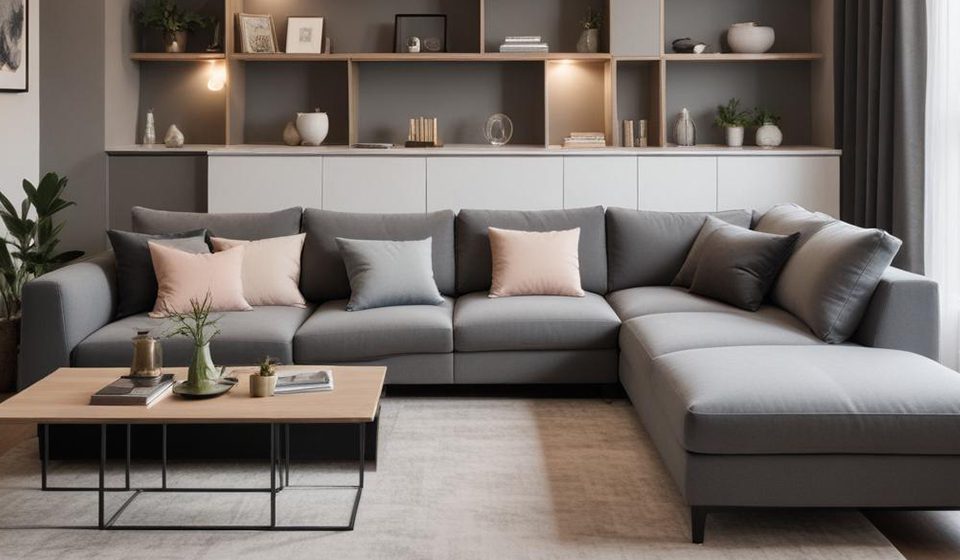In the busy pace of contemporary life, our houses serve as more than just shelter. It serves as a sanctuary for individuals to recharge and refuel before facing the demanding world outside.
Nevertheless, finding a middle ground between work responsibilities and personal time can sometimes seem challenging. While balancing deadlines, meetings, and obligations, it becomes crucial to establish a functional home.
What does it entail to have a practical home, and how can you establish an area that suits your needs?
The Significance of Having a Practical Home
A thoughtfully arranged, functional abode goes beyond being a place with furniture and decorations – it is a meticulously planned environment that improves productivity, performance, and overall health. Its main emphasis is on usability and functionality, ensuring every area of the house has a specific function and enhances your everyday activities.
Let’s explore some methods you can use to design a practical environment for success.
Tips to Design a Functional Home
Choose Furniture that Serves Multiple Purposes
Most professionals love to live in apartments due to their ease of cleaning and maintenance. The space is limited in these abodes, so having versatile furniture is essential for creating a functional home and making the most of available space.
Bedroom benches with storage offer seating as well as the ability to conceal bulky items.
Modular Lounges are excellent choices for compact areas or anyone seeking flexibility in arranging the seating area.
Recliner chairs can double as daybeds while nersting coffee tables maximise space in your living room.
Go with Upholstery that is Easy to Clean
Make life easier with furniture that fights back against messes. Forget spending hours on scrubbing – choose stain-resistant fabrics that laugh in the face of spills. Performance fabrics are your new best friend, repelling liquids and letting you clean up mishaps with a quick swipe. Leather furniture is another champion for busy lives as it wipes clean effortlessly for a stress-free haven.
Design an Efficient Entryway
Does your entryway look like a messy welcome area rather than a calming introduction to your home? You’re not alone! Due to a lack of storage space, mail letters are scattered on the entryway table, shoes thrown around the doorway, and umbrellas tucked away in a corner, which can quickly transform your entryway into a cluttered battleground.
But don’t worry! Here’s your secret weapon: the designated drop zone. This is your entryway’s hero, a space specifically designed to capture the everyday chaos.
Imagine transparent wall hooks ready to receive your coat and bag. Shoes can line up neatly on designated shelves. Mail and keys have their own designated spot. A stylish basket or tray placed on the console table allows us to store miscellaneous items such as sunglasses or daily necessities.
Living in a place with multiple seasons? Think mudroom! This hidden sanctuary keeps bulky winter coats and raincoats out of sight, ensuring your entryway stays clutter-free all year round.
Arrange Furniture Strategically
The arrangement of furniture can greatly impact how functional your home is. Consider the flow of movement within each room and your lifestyle to promote smooth navigation and easy access.
For example, if you’re a home office warrior, set up your workstation in a bright spot with minimal distractions to maximise focus and get things done. Similarly, carve out cosy relaxation zones tucked away from high-traffic areas, perfect for unwinding after a long day.
Lighting Up Your Life
Lighting is a secret weapon in creating a home that works for you. It’s not just about seeing things clearly; it sets the mood and supports your activities.
Need to focus in the kitchen or crank out some work at your desk? Pendant lights and task lamps are your best friends. Their focused beams help you concentrate and avoid straining your eyes.
When it’s time to unwind, switch to warm, inviting light. Floor lamps with soft shades create a cosy atmosphere, while recessed lighting offers gentle background illumination.
Don’t forget the magic of natural light! Sheer curtains in the living room allow the right amount of sunlight while keeping the space bright and airy. On the other hand, blackout curtains in the bedroom ensure a good night’s sleep by blocking out unwanted light.
Final Takeaways
Designing a practical living space is a way to prioritise your health and happiness. By focusing on maximising space, choosing easy-to-clean materials, and including clever design features, you can build a sanctuary that complements your hectic schedule and enables you to succeed in your personal and professional life.



































